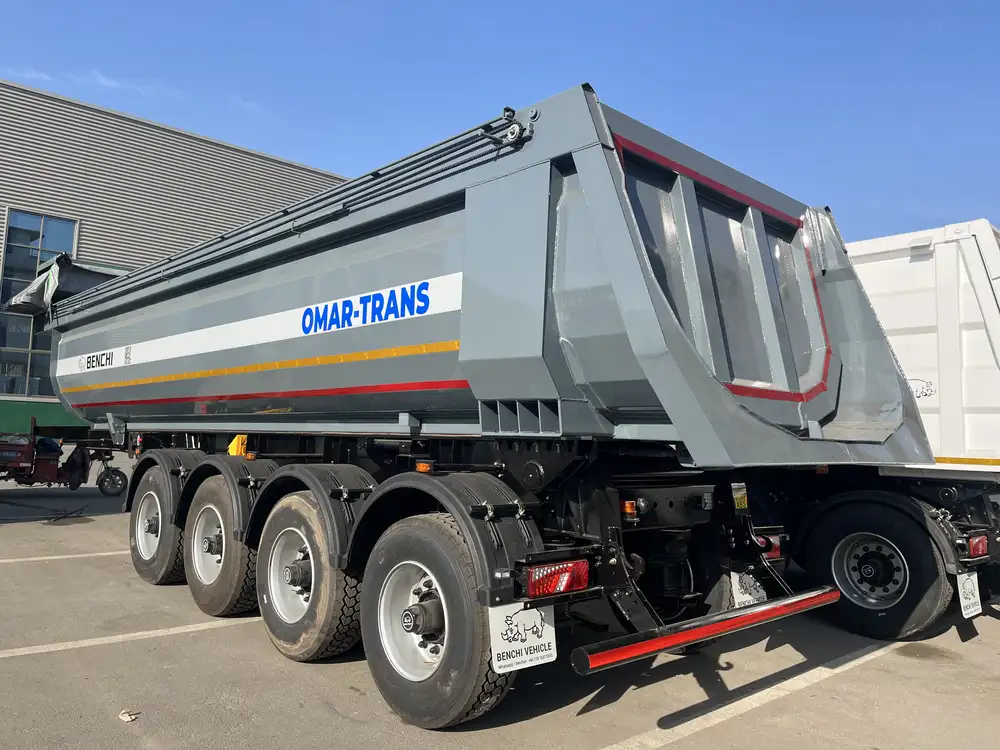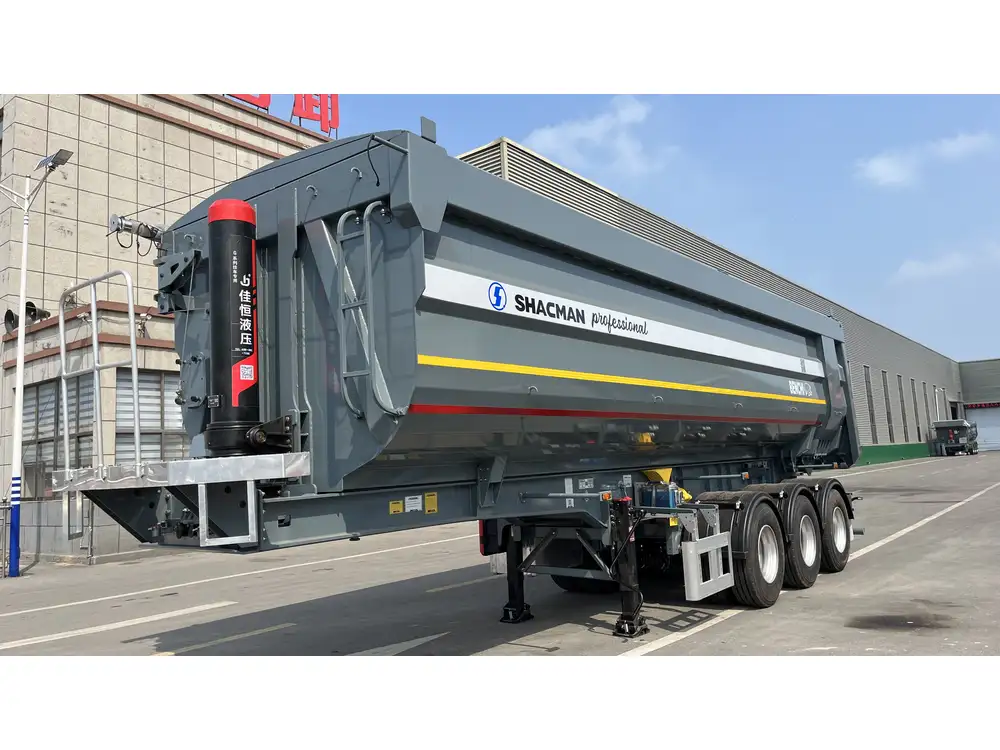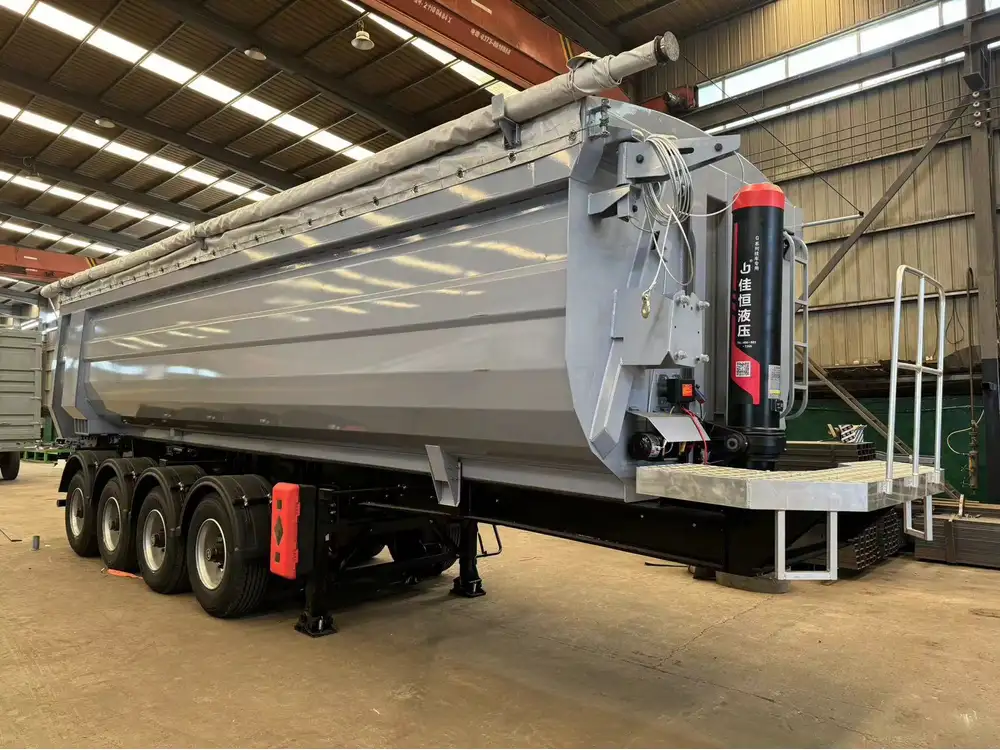The transportation industry is constantly evolving, with logistics and efficiency being paramount. When it comes to hauling hefty loads, finding the right trailer suited for the job can be a challenging task. One common query among transport professionals and enthusiasts alike is whether a semi-truck can be placed on a gooseneck trailer. In this comprehensive guide, we delve deep into this intricate topic, exploring various types of gooseneck trailers, the structural implications of loading a semi-truck onto one, and the best practices for safe and efficient hauling.
Understanding Gooseneck Trailers
What is a Gooseneck Trailer?
A gooseneck trailer is a type of trailer characterized by a hitch that connects to a ball mounted in the bed of a pickup truck or flatbed truck, rather than a regular two-inch ball hitch. This design allows for improved stability and maneuverability, particularly with heavier loads. Commonly used for transporting livestock, construction equipment, and even toys, gooseneck trailers typically come in various shapes and sizes, each tailored for specific hauling requirements.
Types of Gooseneck Trailers
| Type | Description | Common Uses |
|---|---|---|
| Flatbed Gooseneck | A flat platform with no sides, ideal for easy loading and unloading. | Construction materials, vehicles |
| Enclosed Gooseneck | A fully enclosed space offering protection for the cargo. | Transportation of expensive or sensitive items |
| Dump Gooseneck | Features a hydraulic lift to dump its contents. | Hauling dirt, gravel, or debris |
| Living Quarter Gooseneck | Combines living space with a trailer for hauling horses or livestock. | Horse shows, camping, or livestock transport |
This variety allows users to choose based on their load type and weight requirements, raising questions about the adaptability of these trailers, especially concerning semi-trucks.

Semi-Trucks and Their Weight Considerations
The Anatomy of a Semi-Truck
A semi-truck, often referred to as a tractor-trailer, typically consists of two main parts: the tractor (the front portion with the engine) and the trailer (the rear portion that carries the load). Semi-trucks are designed to carry substantial weights, often exceeding the legal weight limit for standard vehicles.
Weight Specifications
| Component | Average Weight |
|---|---|
| Tractor | 15,000 – 20,000 pounds |
| Loaded Trailer | Up to 34,000 pounds |
| Total Combined Weight | Up to 80,000 pounds (max for most configurations) |
Given these staggering statistics, the question arises: can a semi-truck be safely placed upon a gooseneck trailer?

The Viability of Loading a Semi-Truck on a Gooseneck Trailer
Structural Integrity and Design Limitations
Gooseneck trailers are designed primarily for specific types of cargo. Attempting to place a semi-truck on a gooseneck could severely compromise the trailer’s structural integrity. Almost universally, flatbed gooseneck trailers are rated for loads up to 30,000 pounds, while a full semi-truck can weigh up to 80,000 pounds when fully loaded.
Key Considerations
Weight Capacity: Exceeding the weight limit of a gooseneck can lead to catastrophic failure, resulting in trailer damage or accidents.
Frame Dimensions: The dimensions of the gooseneck trailer must accommodate the configuration of the semi-truck, including length, width, and height.
Legal Restrictions: Local and federal regulations may prohibit the transport of oversized loads, including semi-trucks, on trailers not designed for such purposes.

Safety Risks
Attempting to load a semi-truck onto a gooseneck trailer presents substantial safety risks:
- Instability: A gooseneck trailer may not provide the necessary stability for a semi-truck, increasing the risk of accidents.
- Load Shifting: Tow weight distribution becomes crucial; if not harnessed correctly, a misaligned load can lead to hazardous situations on the road.
- Braking Inefficiencies: The braking system of a gooseneck may not be equipped to handle the weight of a semi-truck, leading to dangerous stopping distances.
Alternative Options for Transporting Semi-Trucks
Car Haulers
Car haulers are designed specifically to transport vehicles. They often feature multiple ramps and adjustable components, making them suitable for carrying semi-trucks safely.

Specialized Lowboy Trailers
Lowboy trailers are designed for transporting oversized equipment. They have a lower deck height, allowing for easier loading of high-profile loads like semi-trucks.
Comparison of Trailer Types for Hauling Semi-Trucks
| Trailer Type | Weight Capacity | Stability | Ideal Use |
|---|---|---|---|
| Gooseneck | Up to 30,000 lbs | Moderate | Light equipment |
| Car Hauler | Varies | High | Standard vehicles |
| Lowboy Trailer | 40,000 lbs + | Very High | Semi-trucks and heavy equipment |
Additional Considerations When Hauling
Insurance and Liability
When considering hauling a semi-truck using unconventional methods, it’s vital to understand the insurance implications. Inadequate coverage may lead to financial disaster in the event of an accident.
- Commercial Auto Insurance: Ensure that both the hauler and the hauling vehicle are adequately covered.
- Cargo Insurance: Consider taking additional coverage for the cargo being transported.

Permitting
Transporting oversized vehicles, such as semi-trucks, may require specific permits.
- Oversized Load Permits: Necessary for loads exceeding legal weight or dimension limits.
- Route Survey: Before hauling, conduct a route survey to identify potential obstacles, such as low bridges or weight-restricted roads.
Choosing the Right Trailer for Your Needs
How to Make the Right Choice
- Evaluate Load Requirements: Assess the weight and dimensions of the semi-truck.
- Consult Experts: If unsure, consulting with transportation experts can provide invaluable insights into the best methods.
- Testimonies and Reviews: Seek input from those who have experience with transporting semi-trucks, which could illuminate the right path forward.

Frequently Asked Questions (FAQs)
Can You Load a Fully Loaded Semi-Truck on a Gooseneck Trailer?
No, fully loaded semi-trucks substantially exceed the weight limits of most gooseneck trailers, posing serious risks to structural integrity and road safety.
What is the Best Trailer to Haul a Semi-Truck?
Lowboy trailers are ideal for hauling semi-trucks as they can handle heavy loads and have a low profile for easy loading.

Are There Any Legal Restrictions When Transporting Heavy Equipment?
Yes, hauling heavy equipment often requires special permits, and regulations may vary by state. Always check with local authorities.
What Additional Safety Precautions Should Be Considered?
- Ensure proper hitching
- Distribute the load evenly
- Regularly inspect the trailer and truck prior to transport
Conclusion: The Essential Takeaway
While gooseneck trailers offer remarkable versatility and stability for various hauling jobs, the notion of placing a semi-truck upon one strays into perilous territory. Weight constraints, safety risks, and legal restrictions pose considerable barriers. Therefore, when faced with the need to transport a semi-truck, opting for specialized equipment like lowboy trailers or professional car haulers is advisable.
Navigating through the complexities of transport requires knowledge, expertise, and a clear understanding of your equipment. By making informed decisions, you can ensure not only the safety of your cargo but also the efficiency of your operations in the fast-paced world of logistics.



